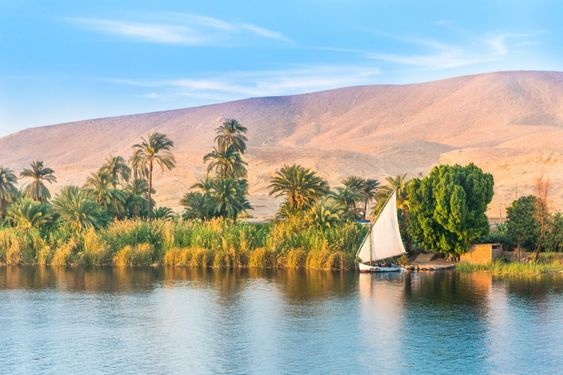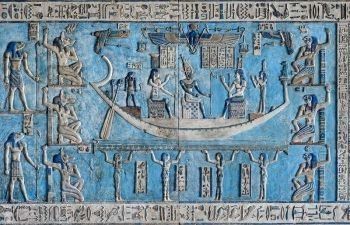3 Days Trip Luxor and Aswan from Sahel Hashesh
Enjoy 3 days tour to Luxor, Aswan and Abu Simbel from Sahel Hashesh by Private vehicle and tour guide, Visit, Dendera temple, The Valley of the Kings, Karnak temple, Queen Hatshepsut temple, The Colossi of Memnon, The temple of Phiala

Enjoy 3 days tour to Luxor , Aswan and Abu Simbel from Sahel Hashesh or Port Ghalib by Private vehicle and tour guide, Visit, Dendera temple ,The Valley of the Kings, Karnak ![]() temple, Queen Hatshepsut temple, The Colossi of Memnon, The temple of Phiala
temple, Queen Hatshepsut temple, The Colossi of Memnon, The temple of Phiala
At 04:00 Am We will pick you up from Sahel Hashesh by private air-conditioned taxi
At 08:00 Am
Dendera temple
The Temple of Hathor was largely constructed during the Late Ptolemaic period, specifically during the reign of Ptolemy XII and Cleopatra VII. Later additions were made during the Roman period. Although built by a dynasty of rulers who were not native Egyptians themselves, the design of this temple has been found to be in accordance with that of other classical Egyptian temples, with the exception of the front of the hypostyle hall, which, according to an inscription above the entrance, was constructed by Emperor Tiberius.
Apart from these, there are also scenes in the temple complex portraying the Ptolemaic rulers. For example, carved onto the external face of one of the temple walls is a huge relief of Cleopatra VII and her son by Julius Caesar and co-ruler, Ptolemy XV (better known as Caesarion). The two Ptolemaic rulers are shown dressed in Egyptian garb, and offering sacrifices.
Hathor was also regarded as a goddess of healing, and this is evident in the presence of a sanatorium in the temple complex. Here, pilgrims would come to be cured by the goddess. Sacred water (which was made holy by having it poured onto statues inscribed with sacred texts) was used for bathing, unguents were dispensed by the priests of Hathor, and sleeping quarters were provided for those hoping that the goddess would appear in their dreams, and so aid them.
At 09:30 drive to Luxor
Visit Karnak ![]() temple
temple
The Temple of Karnak ![]() is the largest ancient religious site known anywhere in the world, No site in Egypt is more impressive than Karnak
is the largest ancient religious site known anywhere in the world, No site in Egypt is more impressive than Karnak ![]() . It is the largest temple complex ever built by man. It represents the combined achievement of many generations of ancient builders and Pharaohs. The Temple of Karnak
. It is the largest temple complex ever built by man. It represents the combined achievement of many generations of ancient builders and Pharaohs. The Temple of Karnak ![]() is actually three main temples situated on 247 acres of land.
is actually three main temples situated on 247 acres of land.
13:00 Lunch in Local restaurant on the west bank
At 14:00- The valley of the Kings
The Valley of the Kings The final resting place of Egypt’s rulers from the 18th to the 20th dynasty, it is home to tombs including the great Pharaoh Ramses II and boy Pharaoh Tutankhamen. The tombs were well stocked with all the material goods a ruler might need in the next world. Most of the decoration inside the tombs is still well preserved. If you wish to visit the Tomb of The young Pharaoh Tutankhamon. It costs 200 Egyptians Pounds Extra
16:00 the Colossi Of Memnon
Colossi of Memnon are two massive stone statues of king Amenhotep III are the only remains of a complete mortuary temple. The statues are made from blocks of quartzite sandstone which exist in Cairo then moved 700 KM to Luxor , The two statues Know as the Colossi of Memnon, Rising about 18 M from the plain, They are the remains of what was once the largest complex on the west bank, Built by Amenhotep the Third. At around noon you will have lunch in a local restaurant in Luxor , Then Visit The Temple of Karnak ![]() -the largest ancient religious site known anywhere in the world :
-the largest ancient religious site known anywhere in the world :
Overnight in Luxor in Steigenberger Hotel Luxor

After Breakfast drive to Aswan
Visits of Aswan including the Temple of Philae and tour by Felucca around Elephantine, the High Dam, the Unfinished Obelisk
Phiala temple
Built to honor the goddess Isis, this was the last temple built in the classical Egyptian style. Construction began around 690 BC, and it was one of the last outposts where the goddess was worshipped.
The High Dam
Aswan High Dam is a rock-fill dam located at the northern border between Egypt and Sudan. The dam is fed by the River Nile and the reservoir forms Lake Nasser. Construction for the project began in 1960 and was completed in 1968. It was officially inaugurated in 1971.
The Unfinished Obelisk
Aswan was the source of ancient Egypt’s finest granite, used to make statues and embellish temples, pyramids, and obelisks. The large unfinished obelisk in the Northern Quarries has provided valuable insight into how these monuments were created, although the full construction process is still not entirely clear. Three sides of the shaft, nearly 42m long, were completed except for the inscriptions. At 1168 tonnes, the completed obelisk would have been the single heaviest piece of stone the Egyptians ever fashioned.
12:00 lunch during the trip
Overnight in Basma Hotel;

Breakfast box with Early departure Visit Abu Simbel Abu Simbel temples The two temples of Ramses the second and the Queen Nefertari were carved out of the Mountain on the west bank of the Nile between 1274 and 1244 B.c, The Great Temple was dedicated to Ramses the second, Ra-Harakhty, Amun Ra and Ptah, with 4 Colossal statues, The second temple was dedicated to The Queen Nefertari and Goddess Hathor, the two temples were dismantled stone by stone and rebuilt on higher ground, The preservation of the two temples of Abu Simbel must Rank as the greatest Achievement of the Unesco 13:00; Lunch in Aswan Drive to Sahel Hashesh

Inclusions:
- Private air-conditioned car
- Entrance fees
- Private tour guide
- Lunch in Luxor and in Aswan
- One Night in Steigenberger Luxor
- One Night stay at Basma Aswan based on Bed and Breakfast
- Motorboat Trip in Aswan to Phila temple
- Lunch at a quality restaurant
- The assistance of our personal during tours
- No Hidden Costs
Exclusions:
- Any Extras not mentioned in the itinerary
- Tipping
- SailTrip
- Dinner in Aswan
Please remember to bring:
- Passports
- Camera
- Hat
- Sunglasses
Reviews
























